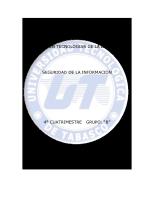Site Analysis
ISSUES AND ( OVERVIEW C ontex tu al analysis is a predesign research a c tiv ity w h ic h focuses on the existing, im
Views 231 Downloads 69 File size 8MB
Recommend stories
- Categories
- Naturaleza
- Business
Citation preview
ISSUES AND
( OVERVIEW C ontex tu al analysis is a predesign research a c tiv ity w h ic h focuses on the existing, im m in en t and potential conditions on and aroun d a project site. It is, in a sense, an in v e n to ry of all the pressures, forces and s itu a tio n s and their in teractions at the p ro p erty w h e re our project w ill be built. T h e m a jo r ro le o f c o n te x tu a l a n a ly s is .«in d e s ig n is,.thafc.of-informing us a b o u t o u r s it e p r io r to b eg in n in g o u r d e s ig n c o n ce p ts about
s o .t h a t o u r e a r ly
t h in k in g
o u r b u ild in g can in c o r p o r a t e
m e a n in g f u l responses to e x t e r n a l c o n d it io n s .
;
'T yp ic a l site issues addressed in a contextual an alysis are^ite location, size, sh ap e, c o n tours, d rainag e pattems, o~ning__and_s etbacks, ujjJTtTes, significant on jjiteJea.tupes (buildings,._tree.s, e tc ), surrounding J caffLc, n e ig h b o rh o o d ,patterns, views to and from the site andjziim ate. As designers w e need to k n o w something about these issues in o rd e r to design a suc.cess.rui b u ild in g that n o t orr.terree.ts its jn_tein-a.L res pons ibilities (fu n c tio p i) but that also relates w e ll to its external environm ent. Since our b uildin g "w ill exist.for” severiTyears, our contextual an alysis should attempt to deal w ith p o te n tial future conditions as well as the ones w e can o b se rve on the site today. S o m e of the typ ica l issues in this regard are ch a n g in g z o n in g patterns around oursite, shifts in the d esig n atio n of major and m inor streets, ch a n g in g cultural patterns in the su rro u n d ing neigh bo rh ood and the con stru ction of s ig n ific a n t projects nearby that im p a c t on our site.
6
-
v just as a single w o rd or phrase is best understood w h e n w e k n o w som ething about its surrounding verb al context so also should w e be a w a re of the contextual situa tion w h ere our building w ill be sited.
% • 1 /
I
V
y e r te /
carverf ^
Ci I—JC JO 1
a
.
C o n te x t is d e fin e d in th e d ic t io n a r y as the “ w h o le s it u a t io n , b a c k g ro u n d o r e n v ir o n m e n t r e le v a n t to s o m e e v e n t o r p r o d u c t . " T h e d e r iv a t io n o f th e w o rd m e a n s to " w e a v e t o g e t h e r ." . The spirit of this m eaning tel is us something. ..^designers regarding the need to "w e a v e " ou'designs i.-uO the existing fa&ric o: s'te conditions, pressures, problem s and opportunities. W e must strive for a sense of fit between the n e w c o m e r to the site tour building) and the site itself. The notion of "fit" does not necessarily im ply subordina tion of our building to site conditions. W e may choose to be in sym path y with some site conditions w h ere w e attempt to save, reinforce, am plify and im prove bn w h at w e find on the site. W e m ay also identify certain site conditions w h ic h w e want to de-
,
-
■liierately alter, elim in ate, r guise or reform. "W e a v in g " as a concept applied to the p lacem ent of buildings on sites w ill alw ays in clu d e som e alteration of ... the existing conditions. W h a t is important is that w e m ake these decisions deliber--ately and thoughtfully so that the effects of --• • our building on the site are not accidental. W h e th e r attempting to go "w ith " the site or to "contrast" the site, our early thinking is pivotal in terms of producing a successful project.
7

![Site Analysis - Edward t White[1]](https://vsip.info/img/200x200/site-analysis-edward-t-white1-3-pdf-free.jpg)







